Introduction:
Good day to you all!
Well, today I shall be gracefully gliding into uncharted waters with the first of a pair of reviews of two IEMs by Periodic Audio.
For those who don’t know (and this category of reader until recently included Layman1), they are a California, USA based company, with the apparently revolutionary mission statement of producing portable audio products with “high quality audio performance”.
Who would’ve thunk it?
Whilst I’d heard a bit of a positive buzz about the Periodic Audio Be a couple of years back, I had no awareness of the origins or character of the company itself.
I took a look at their website as part of my research for these reviews and you certainly have to admire their chutzpah
I’ll include here a link to the ‘Customer Care’ page on their website.
I encourage you to scroll down to the ‘Returns’ section, and have a read.
It’s quite amusing, although I can see the potential for that humour to backfire somewhat, were a customer to be in the unfortunate position of having encountered a product defect or suffered a cable failure or similar.
https://periodicaudio.com/pages/customer-care
Still, I suppose it speaks volumes to the company’s faith in their products. They offer a 5-year warranty, although as ever, it pays to read the small print.
The warranty only applies if you register your product on their website within 30 days of purchasing the product. On behalf of the Layman1 Public Information Service, you’re welcome
Furthermore, the warranty period is reduced to 2 years for those outside the USA.
I’m not sure which warranty period would apply if one were to buy the IEMs whilst travelling/working in the USA but then return back to one’s home country and subsequently find cause to make a claim? Hopefully such a ‘test case’ never has cause to come before a court
Well, let us move on to the whole point of this endeavour, namely an IEM review.
Today, I’ll be reviewing the Period Audio Be.
By way of a time-saving hint, each model in their entire IEM line-up is named after the material from which the dynamic driver diaphragm is made.
In this case, Beryllium, which their website reliably informs me is ‘among the least dense stable metals, but also has among the highest Young’s modulus values (a ratio of the stiffness) and speed of sound’.
They go on to claim that ‘This rare combination of performance attributes is what endows the Be IEMs with their freakish ability to compete with the best Beryllium transducer-based headphones on the market, at any price’.
Sadly, since Layman1 has thus far never had the fortune of hearing any Beryllium transducer-based headphones (let alone the best ones on the market), I shall be unable to examine the veracity of this bold claim.
If anyone wishes to donate a pair of Beryllium transducer-based headphones (market-leading or otherwise) for such a purpose, Layman1 would be delighted to entertain your proposal on the private messaging system here
All details of this IEM can be found on the appropriate product page of Period Audio’s website (link below), and the IEM may be able to be purchased there (it may be listed as ‘out of stock’) and delivered to locations around the globe. It can also be purchased from various other dealers of course too.
https://periodicaudio.com/collections/in-ear-monitors/products/beryllium
It would be remiss of me not to note that they sometimes have an option on the product page to purchase a ‘Blemished’ (a.k.a. ‘B-stock) version of the IEM at a substantial discount.
The RRP at time of writing was a $299, placing it – financially speaking - at what I suppose these days would be around the bottom of mid-range or the upper end of the entry level.
My sincere thanks to John at KS Distribution and the team at Periodic Audio, for providing me with a review unit to keep in exchange for an honest review.
For readers in the UK, the IEM can be purchased here (other stockists may be available):
https://www.hifiheadphones.co.uk/co...cts/periodic-audio-be-iem-earphones-beryllium
Well, a longer-than-usual preamble today, but I shall leave you waiting no longer.
Let us proceed impatiently onwards, and see what this looks like in the flesh, so to speak
Photos:


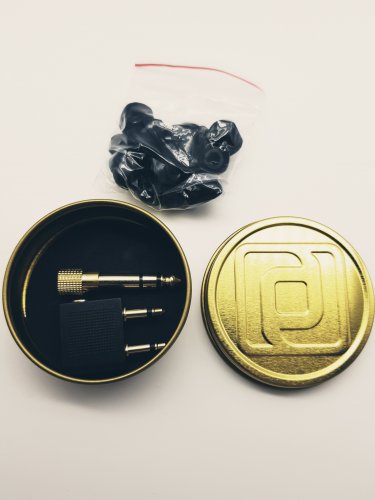

Unboxing, packaging and accessories:
The packaging – in keeping with the mission statement of the company – is what I would tactfully describe as ‘minimalist’, with all unnecessary bells and whistles stripped away.
There’s a pleasingly comprehensive array of eartips provided, two useful adaptors (a double mono airline adaptor and a 3.5 to 6.3mm adaptor) and a carrying case, which Periodic Audio describe as being ‘sized to fit inside the coin pocket of your favourite jeans’.
The cable here is of an unspecified material, thin, glossy black and springy.
That springy quality was initially a source of some annoyance when using the IEMs in bed with my DAP, as it kept curling up over the top of the DAP and getting in the way when I wanted to use the controls, although in fairness this was solved by shoving some of the cable underneath the DAP to keep it out of the way. Furthermore, this product is advertised as being designed for use on the go, so it may not be entirely fair to raise a criticism based on use at home, especially one so easily solved, which I include purely in the interests of honesty and thoroughness
The cable feels fine in daily use and I haven’t noticed any other issues with it.
Unfortunately, the pleasant cable feelings ended at this point.
As my regular readers – hello bored/desperate insomniacs! – will know, Layman1 is of the opinion that a special place is reserved in hell for those manufacturers with the temerity to supply a cable with 3.5mm SE as the only choice on anything above an entry level product.
Worse still would be the cardinal sin of supplying a non-detachable cable!
Regrettably, Periodic Audio flagrantly disregard such sentiments on their entire IEM line-up and so here we have a $299 IEM with a fixed, non-detachable cable, terminated in 3.5mm SE. I think I can feel my face twitching convulsively, even as my fists clench involuntarily and I tremble with barely-suppressed fury.
In fairness to Periodic Audio, they are trying to produce bare bones products where the focus is solely on sound, performance and value for money with all extraneous clap-trap stripped away. Furthermore, they want their IEMs to be able to work on all the most commonly used devices and they engineer them robustly such that mechanical failure should not be an issue (and back this up with the aforementioned warranty).
So, from this perspective, one could argue that the cable configuration here is not an unforgivable act. Still, I really would have liked the option to be able to try out different cable options at home, and certainly to be able to plug the IEMs into the 4.4mm balanced output of my DAP in order to extract a superior performance from them.
Finally, a note about markings. There are no external markings that enable one to determine the left earpiece from the right.
They had the idea of colouring the mesh of the right nozzle red, but I would tactfully suggest that whilst this would be a nice added touch, it cannot be the only such indicator in order for this to be practical and functional on a daily basis. Use of ear tips with built in wax filters immediately negate this functionality, as does the use of the IEMs in anything less than optimal light conditions.
The Fit:
I have now tried a staggering three different IEMs of this cylindrical-barrelled shape and form factor (I think the Flare Audio 2 Pro was the last one) and for some reason they just do not agree with my ear anatomy.
I have tried various tips including my usual go-to options of New Bee foam tips and Sedna Xelastec tips, but I found the foam tips to veil the sound of the IEMs somewhat, reducing soundstage size and separation, whilst making the low end sound somewhat flabby and undefined.
But with the Xelastec tips, I can hear quite significant differences in the sound signature depending on how deeply/tightly they are inserted, and worse still a frequent change in sound signature depending on how my head or jaw are positioned at any one time.
So this has made the review process somewhat challenging, and I trust you will take this into account – as I have – during my impressions.
The flip side of this is that for others, these may well be a perfect fit, with any and all ear tips.
The Sound:
You may or may not be a ‘believer’ of burn-in (or brain burn-in).
I personally feel that with dynamic-driver based IEMs, the burn-in process has an effect on the low-end performance, and with this in mind, I burned in this IEM for around 200 hours. Because I figure that even if I’m wrong, at least I have peace of mind either way, and no-one can later say “oh, but your impressions would have changed if you’d burned them in a bit longer”
I used the Sony WM1A (single-ended output, grr..) for the purposes of this review.
Similarly, I used only the stock cable (grr…).
I’d describe the sound signature thus:
Low end:
Quite bassy, in a way that adds some colouration – welcome or otherwise – to the rest of the sound signature. There’s quite a bit of sub-bass presence, with a reasonable amount of extension. The mid bass seems elevated too, and to my ears, it’s a somewhat L-shaped presentation overall. The speed of the bass response seems fairly slow and whilst this adds some decay and richness, I feel that it does rather come at the cost of tightness and accuracy and can lead to the low end sounding a bit flabby and undefined, especially with foam tips. On my low-end test track ‘Dove Sei?’ by Italian hip-hop outfit Poison, the impact was there, but I felt the extension and texture were somewhat lacking and the rumble suffered from a lack of definition and clarity.
In fairness, as I mentioned previously this could simply be a factor of not really finding a particularly good fit, but it’s something to think about if you’re considering these IEMs.
Mids:
The mids have a meaty and full-bodied quality, informed by that bassy foundation.
This gives a pleasing richness to vocal performances, both male and female.
The strings on my regular classical opera test track (Alison Lau’s performance of Handel’s Lascia la spina in 24-96 HDTracks) sounded gorgeously rich and full-bodied.
Her voice, which soars very high indeed in this song, did not trigger my treble sensitivity and had a pleasing timbre.
On Paul Simon’s ‘The Coast’ (again 24-96 HDTracks), the relative lack of low end activity in the song meant that I was able to hear the IEMs without much influence from the bass, and they did sound a bit more open and spacious, not to mention well-balanced.
Which I just mentioned.
On ‘Fast Times at Dropout High’ (by The Ataris, and specifically the alternative version from the ‘Silver Turns to Rust’ album) again we see both the strengths and weaknesses of the IEM here. The opening electric guitar is full-bodied, but a lack of detail and clarity detract from its performance, making it sound a bit muddy. There’s a bit more detail and clarity in the mids and treble, as the chime of the second electric guitar coming in rings out nicely, and the drums have a more defined sound than the artificial beats of ‘Dove Sei’, the bass drums on other songs or the bassline on this song itself.
I find the vocals to sound slightly recessed. I think spatially they are positioned pretty much dead centre, but again, something of that slight veil/muddiness seems to make them sound just slightly hidden in the mix on some tracks. Again, this tends not to be an issue on songs where there’s limited bass presence.
I tried another of my favourite vocal test tracks, Bollywood song ‘Thodi Der’, which features gorgeous female and male vocals by Shreya Ghoshal and Farhan Saeed respectively.
I’m coming to think that it’s hard for an IEM to make these vocal performances sound anything less than enchanting, although the Be certainly does it's best (humour).
This song is fairly light on bassy instrumentation, and as such the vocals are allowed to shine. I feel the presentation of vocal timbre to be decent but not outstanding. There’s emotion and engagement, but I do feel there’s just a disappointing lack of transparency and micro-detail.
Treble:
I hear this as being decent, with some variability. On songs light on bass activity, it sounds reasonably extended, with a fair degree of openness and air.
There’s a modest amount of sparkle. However, when there’s a solid bass-line in a track, I do feel these effects to be lessened somewhat.
Technical Performance:
I found the soundstage size, in all directions, to be below average for this price point. That perception is further emphasised on bassy tracks.
Similarly, I felt the layering and separation were acceptable, but nothing praiseworthy stood out to me during all of my critical listening.
Micro detail presentation seemed to be a bit below par to me.
Timbre was a mixed bag; the warmth and richness in the mids gave a nice body to vocals and instruments, but the technical performance overall seemed to me to be deleterious to the overall presentation of timbre.
On a positive note though, I found imaging to be good, as was the presentation of significant macro details.
Conclusion:
Overall, I could not in conscience really recommend these IEMs wholeheartedly, at least according to how I’ve subjectively heard them during my review process.
I will be the first to put my hand up and declare that – despite trying various ear tips - I’ve never felt like I had a really secure and stable seal on anything but the foam tips, which unfortunately for me had the effect of exacerbating what I found to be the negative qualities of the IEMs, namely a somewhat muddy and slow low end and what I perceived as a somewhat mediocre technical performance, which sometimes limited the performance of the IEMs.
Having said that, I wouldn’t say they are terrible IEMs either; I found enjoyment in just sitting back and listening to music with them, and they were never sharp, piercing or tinny.
However, at this fairly substantial price point, I can’t say that what I’ve heard is good enough for me to enthusiastically recommend these IEMs, even more so when factoring in the non-detachable cable and 3.5mm only connection which I personally feel are inappropriate for IEMs at this price point, and the strange decision to only have a red grille/mesh on the right nozzle as the sole way of identifying the left earpiece from the right.
As ever though, listening to a demo model prior to purchasing is highly recommended.
I’ve seen plenty of 5-star glowing reviews for this IEM, so it seems it’s doing the right things for some people! It could simply be down to fit.
The company talk a good talk on their entertaining website, and it’s nice to see IEMs designed and built in the USA. Conversely though, if their latest IEMs (the Ti and Mg models) have been released since the various reviews of this one, then it perhaps shows a lack of engagement and responsiveness if they are still not employing any kind of external markers to help people to identify the left IEM from the right. Ditto the non-detachable cable and plug choice, but that’s perhaps just a design policy decision from the company that may not change.
So overall, I’d encourage you to give these a listen before buying if possible, if my (or other people’s) reviews have piqued your curiosity. And experiment with different tips
I feel they’d be a better fit for fans of acoustic, jazz or classical music, as they seem to perform better with tracks that lack thunderous bass or drums.
Anyway, with that I shall sign out here. Thanks for reading and all the best to you!
Good day to you all!
Well, today I shall be gracefully gliding into uncharted waters with the first of a pair of reviews of two IEMs by Periodic Audio.
For those who don’t know (and this category of reader until recently included Layman1), they are a California, USA based company, with the apparently revolutionary mission statement of producing portable audio products with “high quality audio performance”.
Who would’ve thunk it?

Whilst I’d heard a bit of a positive buzz about the Periodic Audio Be a couple of years back, I had no awareness of the origins or character of the company itself.
I took a look at their website as part of my research for these reviews and you certainly have to admire their chutzpah

I’ll include here a link to the ‘Customer Care’ page on their website.
I encourage you to scroll down to the ‘Returns’ section, and have a read.
It’s quite amusing, although I can see the potential for that humour to backfire somewhat, were a customer to be in the unfortunate position of having encountered a product defect or suffered a cable failure or similar.
https://periodicaudio.com/pages/customer-care
Still, I suppose it speaks volumes to the company’s faith in their products. They offer a 5-year warranty, although as ever, it pays to read the small print.
The warranty only applies if you register your product on their website within 30 days of purchasing the product. On behalf of the Layman1 Public Information Service, you’re welcome

Furthermore, the warranty period is reduced to 2 years for those outside the USA.
I’m not sure which warranty period would apply if one were to buy the IEMs whilst travelling/working in the USA but then return back to one’s home country and subsequently find cause to make a claim? Hopefully such a ‘test case’ never has cause to come before a court

Well, let us move on to the whole point of this endeavour, namely an IEM review.
Today, I’ll be reviewing the Period Audio Be.
By way of a time-saving hint, each model in their entire IEM line-up is named after the material from which the dynamic driver diaphragm is made.
In this case, Beryllium, which their website reliably informs me is ‘among the least dense stable metals, but also has among the highest Young’s modulus values (a ratio of the stiffness) and speed of sound’.
They go on to claim that ‘This rare combination of performance attributes is what endows the Be IEMs with their freakish ability to compete with the best Beryllium transducer-based headphones on the market, at any price’.
Sadly, since Layman1 has thus far never had the fortune of hearing any Beryllium transducer-based headphones (let alone the best ones on the market), I shall be unable to examine the veracity of this bold claim.
If anyone wishes to donate a pair of Beryllium transducer-based headphones (market-leading or otherwise) for such a purpose, Layman1 would be delighted to entertain your proposal on the private messaging system here

All details of this IEM can be found on the appropriate product page of Period Audio’s website (link below), and the IEM may be able to be purchased there (it may be listed as ‘out of stock’) and delivered to locations around the globe. It can also be purchased from various other dealers of course too.
https://periodicaudio.com/collections/in-ear-monitors/products/beryllium
It would be remiss of me not to note that they sometimes have an option on the product page to purchase a ‘Blemished’ (a.k.a. ‘B-stock) version of the IEM at a substantial discount.
The RRP at time of writing was a $299, placing it – financially speaking - at what I suppose these days would be around the bottom of mid-range or the upper end of the entry level.
My sincere thanks to John at KS Distribution and the team at Periodic Audio, for providing me with a review unit to keep in exchange for an honest review.
For readers in the UK, the IEM can be purchased here (other stockists may be available):
https://www.hifiheadphones.co.uk/co...cts/periodic-audio-be-iem-earphones-beryllium
Well, a longer-than-usual preamble today, but I shall leave you waiting no longer.
Let us proceed impatiently onwards, and see what this looks like in the flesh, so to speak

Photos:




Unboxing, packaging and accessories:
The packaging – in keeping with the mission statement of the company – is what I would tactfully describe as ‘minimalist’, with all unnecessary bells and whistles stripped away.
There’s a pleasingly comprehensive array of eartips provided, two useful adaptors (a double mono airline adaptor and a 3.5 to 6.3mm adaptor) and a carrying case, which Periodic Audio describe as being ‘sized to fit inside the coin pocket of your favourite jeans’.
The cable here is of an unspecified material, thin, glossy black and springy.
That springy quality was initially a source of some annoyance when using the IEMs in bed with my DAP, as it kept curling up over the top of the DAP and getting in the way when I wanted to use the controls, although in fairness this was solved by shoving some of the cable underneath the DAP to keep it out of the way. Furthermore, this product is advertised as being designed for use on the go, so it may not be entirely fair to raise a criticism based on use at home, especially one so easily solved, which I include purely in the interests of honesty and thoroughness

The cable feels fine in daily use and I haven’t noticed any other issues with it.
Unfortunately, the pleasant cable feelings ended at this point.
As my regular readers – hello bored/desperate insomniacs! – will know, Layman1 is of the opinion that a special place is reserved in hell for those manufacturers with the temerity to supply a cable with 3.5mm SE as the only choice on anything above an entry level product.
Worse still would be the cardinal sin of supplying a non-detachable cable!
Regrettably, Periodic Audio flagrantly disregard such sentiments on their entire IEM line-up and so here we have a $299 IEM with a fixed, non-detachable cable, terminated in 3.5mm SE. I think I can feel my face twitching convulsively, even as my fists clench involuntarily and I tremble with barely-suppressed fury.
In fairness to Periodic Audio, they are trying to produce bare bones products where the focus is solely on sound, performance and value for money with all extraneous clap-trap stripped away. Furthermore, they want their IEMs to be able to work on all the most commonly used devices and they engineer them robustly such that mechanical failure should not be an issue (and back this up with the aforementioned warranty).
So, from this perspective, one could argue that the cable configuration here is not an unforgivable act. Still, I really would have liked the option to be able to try out different cable options at home, and certainly to be able to plug the IEMs into the 4.4mm balanced output of my DAP in order to extract a superior performance from them.
Finally, a note about markings. There are no external markings that enable one to determine the left earpiece from the right.
They had the idea of colouring the mesh of the right nozzle red, but I would tactfully suggest that whilst this would be a nice added touch, it cannot be the only such indicator in order for this to be practical and functional on a daily basis. Use of ear tips with built in wax filters immediately negate this functionality, as does the use of the IEMs in anything less than optimal light conditions.
The Fit:
I have now tried a staggering three different IEMs of this cylindrical-barrelled shape and form factor (I think the Flare Audio 2 Pro was the last one) and for some reason they just do not agree with my ear anatomy.
I have tried various tips including my usual go-to options of New Bee foam tips and Sedna Xelastec tips, but I found the foam tips to veil the sound of the IEMs somewhat, reducing soundstage size and separation, whilst making the low end sound somewhat flabby and undefined.
But with the Xelastec tips, I can hear quite significant differences in the sound signature depending on how deeply/tightly they are inserted, and worse still a frequent change in sound signature depending on how my head or jaw are positioned at any one time.
So this has made the review process somewhat challenging, and I trust you will take this into account – as I have – during my impressions.
The flip side of this is that for others, these may well be a perfect fit, with any and all ear tips.
The Sound:
You may or may not be a ‘believer’ of burn-in (or brain burn-in).
I personally feel that with dynamic-driver based IEMs, the burn-in process has an effect on the low-end performance, and with this in mind, I burned in this IEM for around 200 hours. Because I figure that even if I’m wrong, at least I have peace of mind either way, and no-one can later say “oh, but your impressions would have changed if you’d burned them in a bit longer”

I used the Sony WM1A (single-ended output, grr..) for the purposes of this review.
Similarly, I used only the stock cable (grr…).
I’d describe the sound signature thus:
Low end:
Quite bassy, in a way that adds some colouration – welcome or otherwise – to the rest of the sound signature. There’s quite a bit of sub-bass presence, with a reasonable amount of extension. The mid bass seems elevated too, and to my ears, it’s a somewhat L-shaped presentation overall. The speed of the bass response seems fairly slow and whilst this adds some decay and richness, I feel that it does rather come at the cost of tightness and accuracy and can lead to the low end sounding a bit flabby and undefined, especially with foam tips. On my low-end test track ‘Dove Sei?’ by Italian hip-hop outfit Poison, the impact was there, but I felt the extension and texture were somewhat lacking and the rumble suffered from a lack of definition and clarity.
In fairness, as I mentioned previously this could simply be a factor of not really finding a particularly good fit, but it’s something to think about if you’re considering these IEMs.
Mids:
The mids have a meaty and full-bodied quality, informed by that bassy foundation.
This gives a pleasing richness to vocal performances, both male and female.
The strings on my regular classical opera test track (Alison Lau’s performance of Handel’s Lascia la spina in 24-96 HDTracks) sounded gorgeously rich and full-bodied.
Her voice, which soars very high indeed in this song, did not trigger my treble sensitivity and had a pleasing timbre.
On Paul Simon’s ‘The Coast’ (again 24-96 HDTracks), the relative lack of low end activity in the song meant that I was able to hear the IEMs without much influence from the bass, and they did sound a bit more open and spacious, not to mention well-balanced.
Which I just mentioned.
On ‘Fast Times at Dropout High’ (by The Ataris, and specifically the alternative version from the ‘Silver Turns to Rust’ album) again we see both the strengths and weaknesses of the IEM here. The opening electric guitar is full-bodied, but a lack of detail and clarity detract from its performance, making it sound a bit muddy. There’s a bit more detail and clarity in the mids and treble, as the chime of the second electric guitar coming in rings out nicely, and the drums have a more defined sound than the artificial beats of ‘Dove Sei’, the bass drums on other songs or the bassline on this song itself.
I find the vocals to sound slightly recessed. I think spatially they are positioned pretty much dead centre, but again, something of that slight veil/muddiness seems to make them sound just slightly hidden in the mix on some tracks. Again, this tends not to be an issue on songs where there’s limited bass presence.
I tried another of my favourite vocal test tracks, Bollywood song ‘Thodi Der’, which features gorgeous female and male vocals by Shreya Ghoshal and Farhan Saeed respectively.
I’m coming to think that it’s hard for an IEM to make these vocal performances sound anything less than enchanting, although the Be certainly does it's best (humour).
This song is fairly light on bassy instrumentation, and as such the vocals are allowed to shine. I feel the presentation of vocal timbre to be decent but not outstanding. There’s emotion and engagement, but I do feel there’s just a disappointing lack of transparency and micro-detail.
Treble:
I hear this as being decent, with some variability. On songs light on bass activity, it sounds reasonably extended, with a fair degree of openness and air.
There’s a modest amount of sparkle. However, when there’s a solid bass-line in a track, I do feel these effects to be lessened somewhat.
Technical Performance:
I found the soundstage size, in all directions, to be below average for this price point. That perception is further emphasised on bassy tracks.
Similarly, I felt the layering and separation were acceptable, but nothing praiseworthy stood out to me during all of my critical listening.
Micro detail presentation seemed to be a bit below par to me.
Timbre was a mixed bag; the warmth and richness in the mids gave a nice body to vocals and instruments, but the technical performance overall seemed to me to be deleterious to the overall presentation of timbre.
On a positive note though, I found imaging to be good, as was the presentation of significant macro details.
Conclusion:
Overall, I could not in conscience really recommend these IEMs wholeheartedly, at least according to how I’ve subjectively heard them during my review process.
I will be the first to put my hand up and declare that – despite trying various ear tips - I’ve never felt like I had a really secure and stable seal on anything but the foam tips, which unfortunately for me had the effect of exacerbating what I found to be the negative qualities of the IEMs, namely a somewhat muddy and slow low end and what I perceived as a somewhat mediocre technical performance, which sometimes limited the performance of the IEMs.
Having said that, I wouldn’t say they are terrible IEMs either; I found enjoyment in just sitting back and listening to music with them, and they were never sharp, piercing or tinny.
However, at this fairly substantial price point, I can’t say that what I’ve heard is good enough for me to enthusiastically recommend these IEMs, even more so when factoring in the non-detachable cable and 3.5mm only connection which I personally feel are inappropriate for IEMs at this price point, and the strange decision to only have a red grille/mesh on the right nozzle as the sole way of identifying the left earpiece from the right.
As ever though, listening to a demo model prior to purchasing is highly recommended.
I’ve seen plenty of 5-star glowing reviews for this IEM, so it seems it’s doing the right things for some people! It could simply be down to fit.
The company talk a good talk on their entertaining website, and it’s nice to see IEMs designed and built in the USA. Conversely though, if their latest IEMs (the Ti and Mg models) have been released since the various reviews of this one, then it perhaps shows a lack of engagement and responsiveness if they are still not employing any kind of external markers to help people to identify the left IEM from the right. Ditto the non-detachable cable and plug choice, but that’s perhaps just a design policy decision from the company that may not change.
So overall, I’d encourage you to give these a listen before buying if possible, if my (or other people’s) reviews have piqued your curiosity. And experiment with different tips

I feel they’d be a better fit for fans of acoustic, jazz or classical music, as they seem to perform better with tracks that lack thunderous bass or drums.
Anyway, with that I shall sign out here. Thanks for reading and all the best to you!







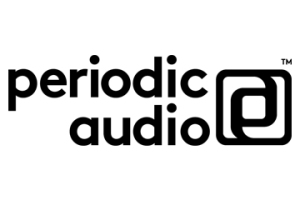
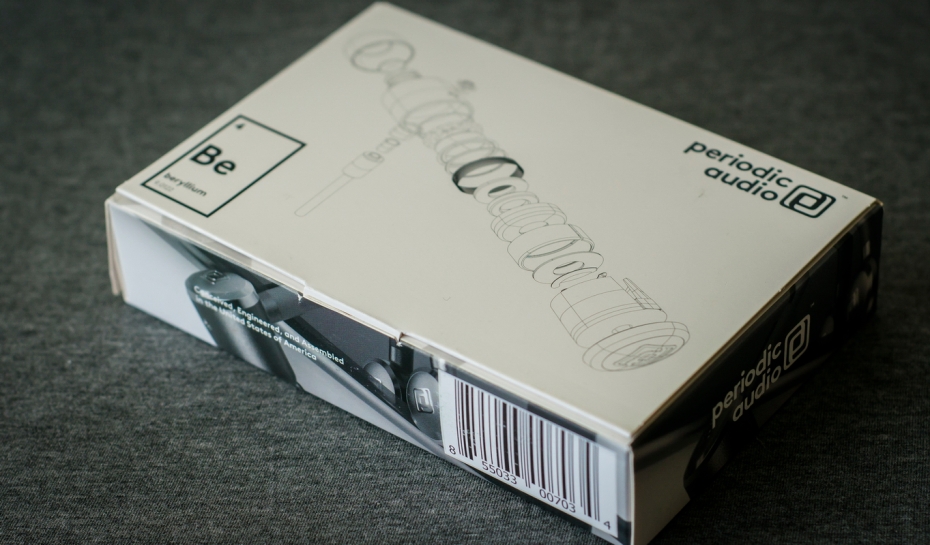












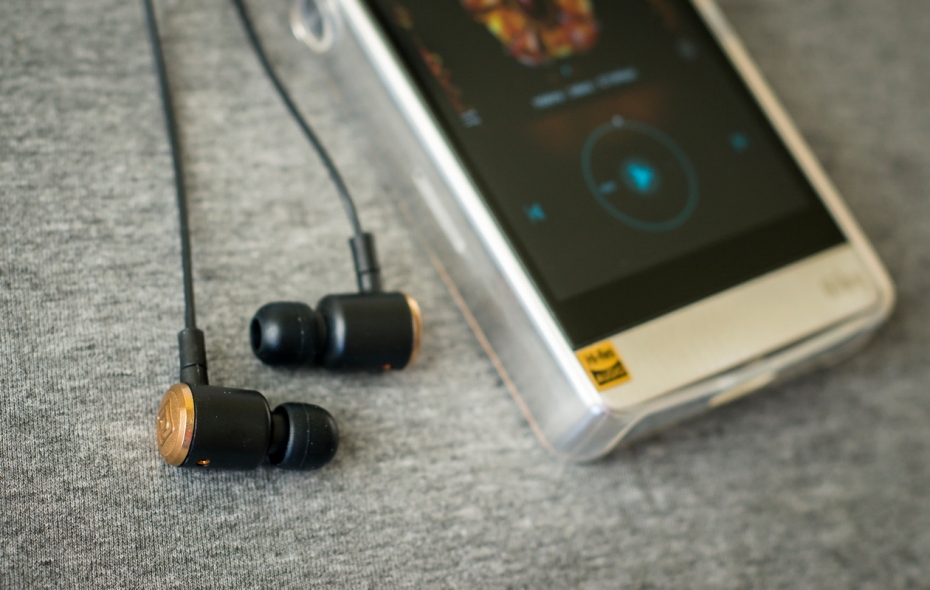
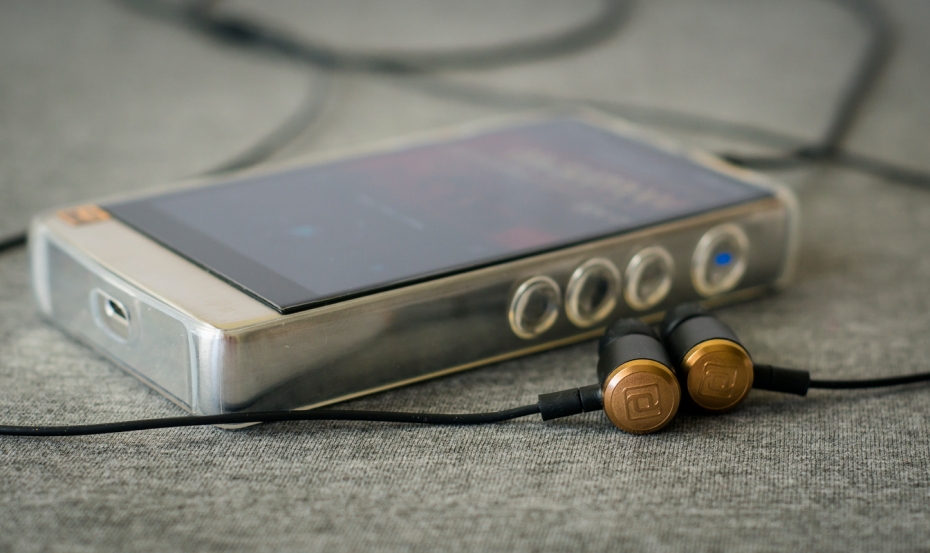



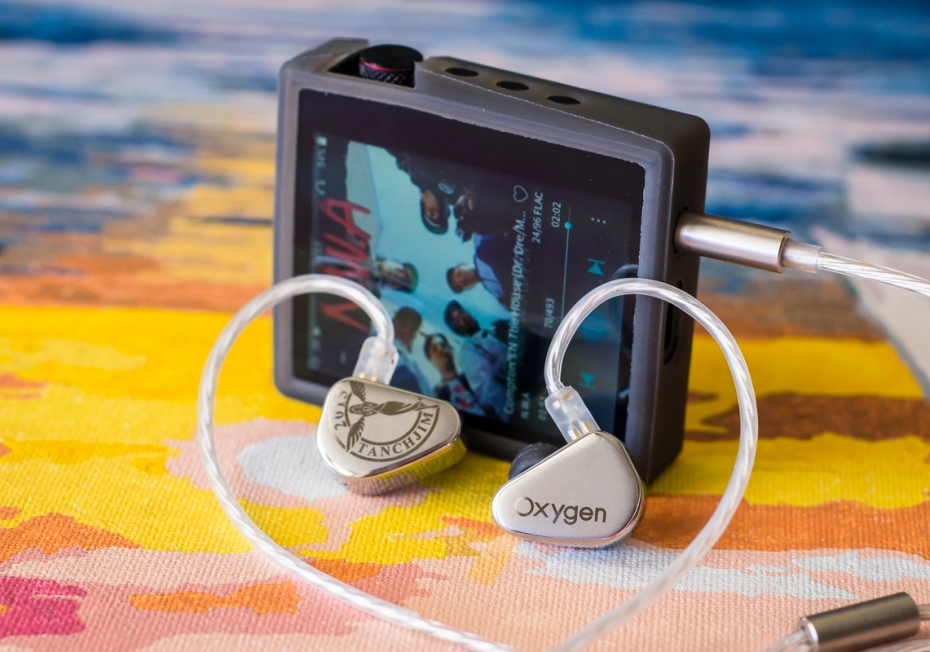


























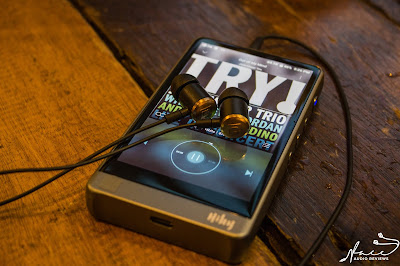

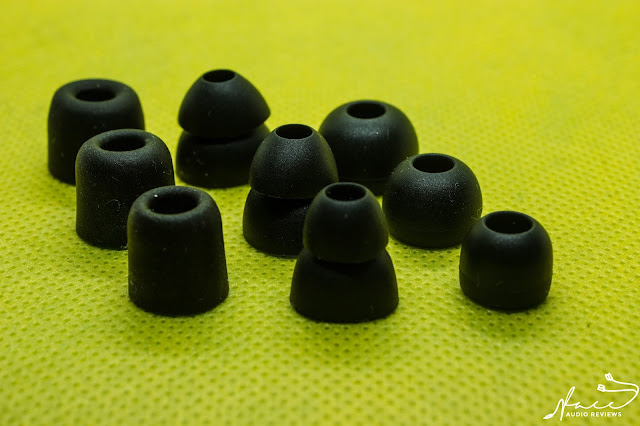








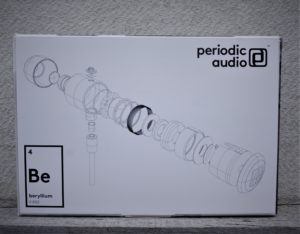

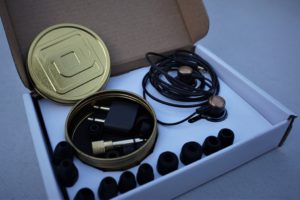

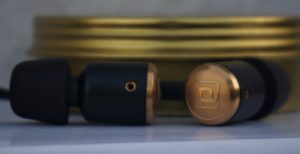
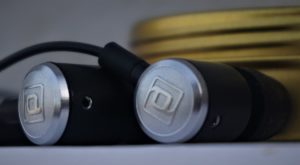








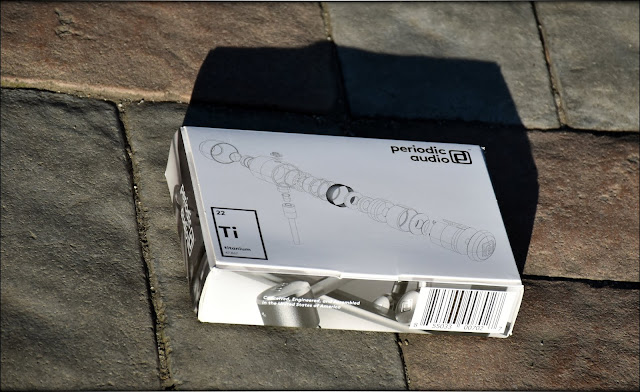





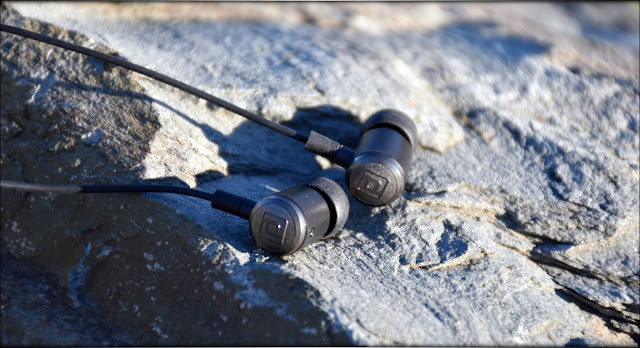























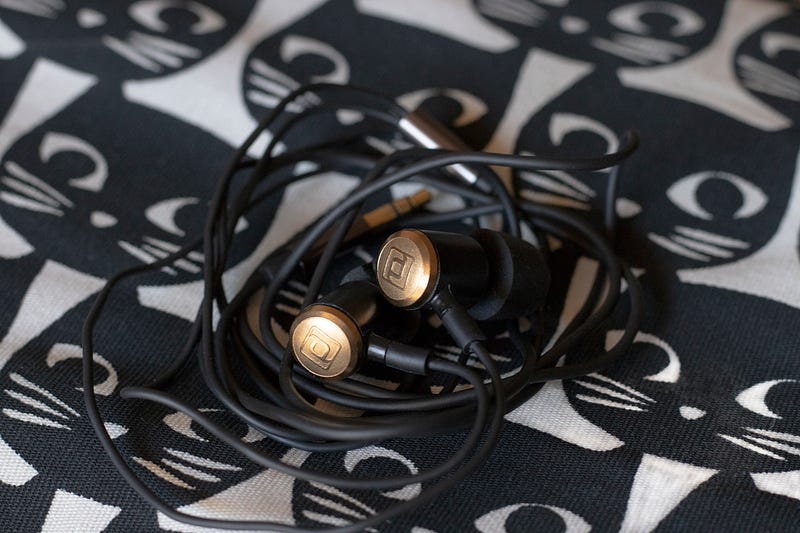
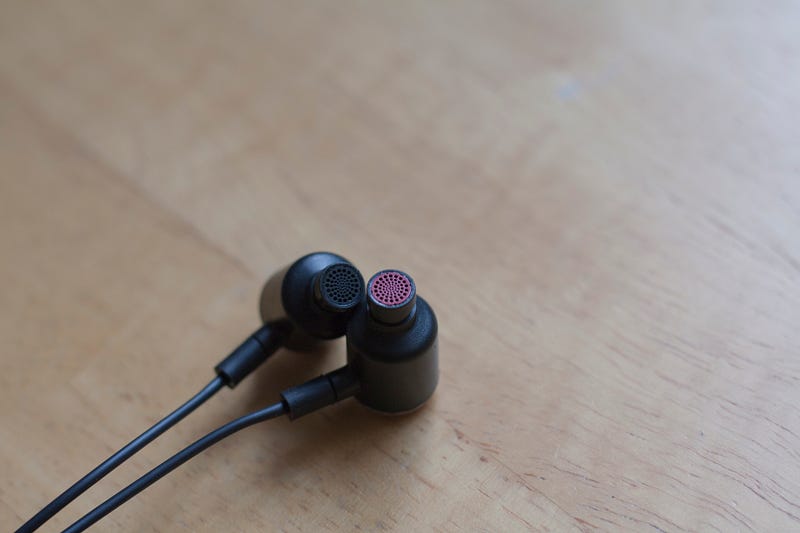
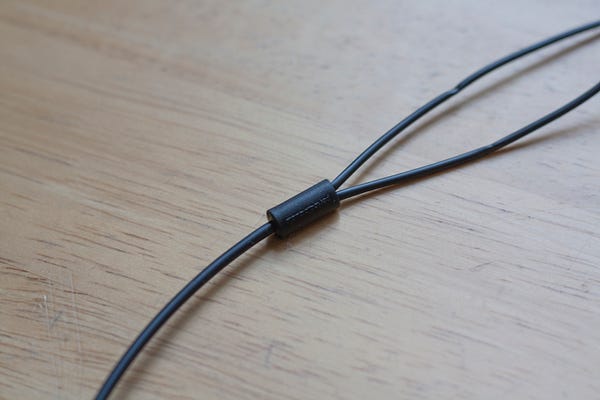
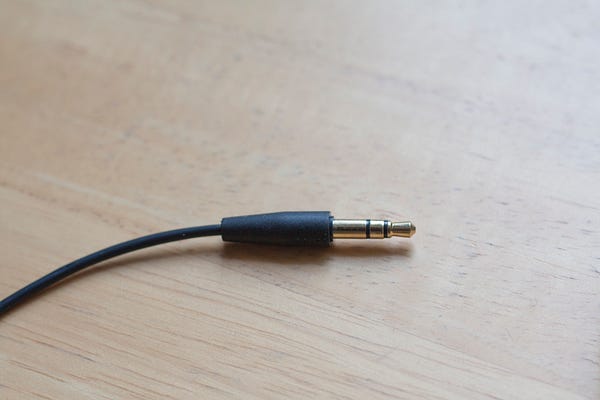
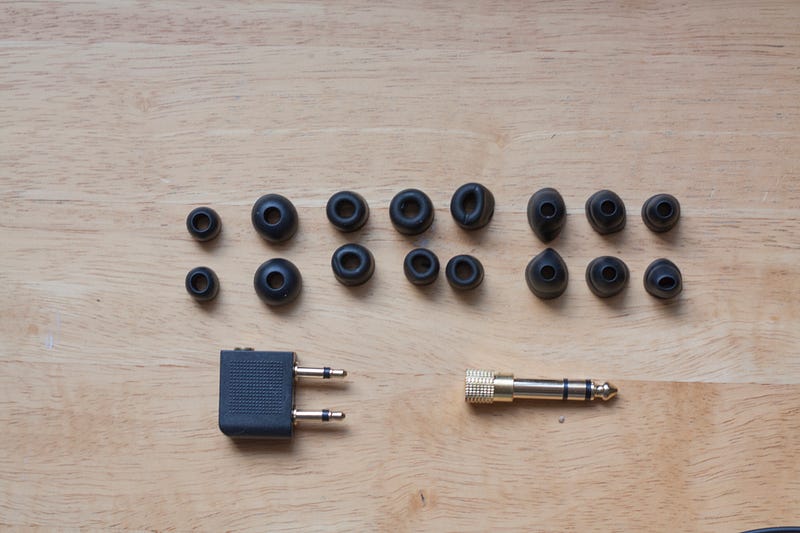






































 and immediately had a smile on my face. Apple was proud of this minor detail, and it's cool that Periodic is using the same process.
and immediately had a smile on my face. Apple was proud of this minor detail, and it's cool that Periodic is using the same process.

